Hidden away in the countryside to the north of Rome, outside a town called Bomarzo, is a mysterious place referred to as the Sacro Bosco or “Sacred Wood” or the “Park of Monsters”. It is mysterious because its creator intended it to be.
The hilly area of northern Lazio, not far from Rome, has much to interest the historically-minded traveller and photographer. In pre-Roman times it was of course part of the Etruscan heartland and significant necropoli still exist in places like Tarquinia. In the late Middle Ages and Renaissance some of the most wealthy and powerful Roman families like the Farnese and Orsini acquired large estates here, and noble titles to go with them. Medieval castles and grand Renaissance villas and palaces seem to appear on every skyline.
One such palace dominates the town of Bomarzo, the Dukedom of which was held by the Orsini – a family which, rather impressively, produced 34 cardinals and five popes over a period of almost a thousand years from the 8th Century. Yes, really.
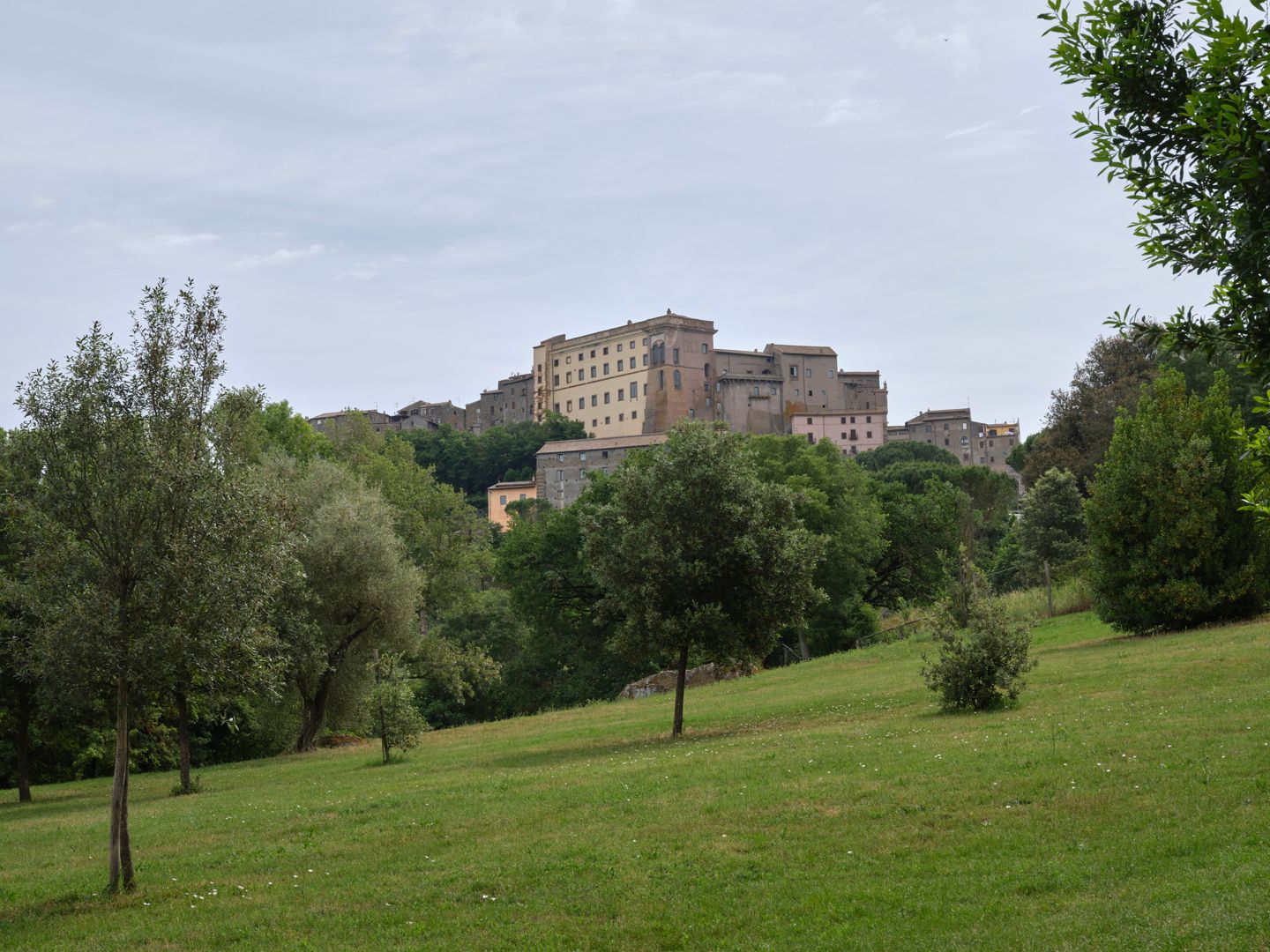
These days Bomarzo seems to be a quiet sort of a place, principally inhabited by old people whose job is to sit on benches and stare at passing strangers. In the mid-16th Century it was a bit more important, as the palace was owned by Prince Pier Francesco Orsini, known as Vicino Orsini.
The male members of these families generally went for either a military or a clerical life (sometimes both). The females made advantageous marriages or chose a religious life (seldom both). Vicino Orsini’s choice was to be a condottiere or mercenary captain. By the 16th Century such people were no longer the cutthroat freebooters of earlier ages, but those who provided and led the armies of the Papacy, France and the Holy Roman Empire in their dynastic and religious wars. They were also expected to be highly cultured patrons of the arts, following the tradition started by “Renaissance men” like Federico da Montefeltro of Urbino and Vicino’s contemporary Cardinal Ippolito II d’Este.
Vicino was married to Giulia Farnese. A marriage between such great families would probably have been an arranged one, but it must also have been happy, given the grief which afflicted Vicino on Giulia’s death. By the 1550s, in addition to channelling their grief into conventional religious contemplation, it was acceptable for humanists to seek the consolations of philosophy.
And so it was that in 1552 Vicino commissioned the Neapolitan architect Pirro Ligorio to create a curious garden full of strange monsters and arcane allusions to divert the melancholy mind.
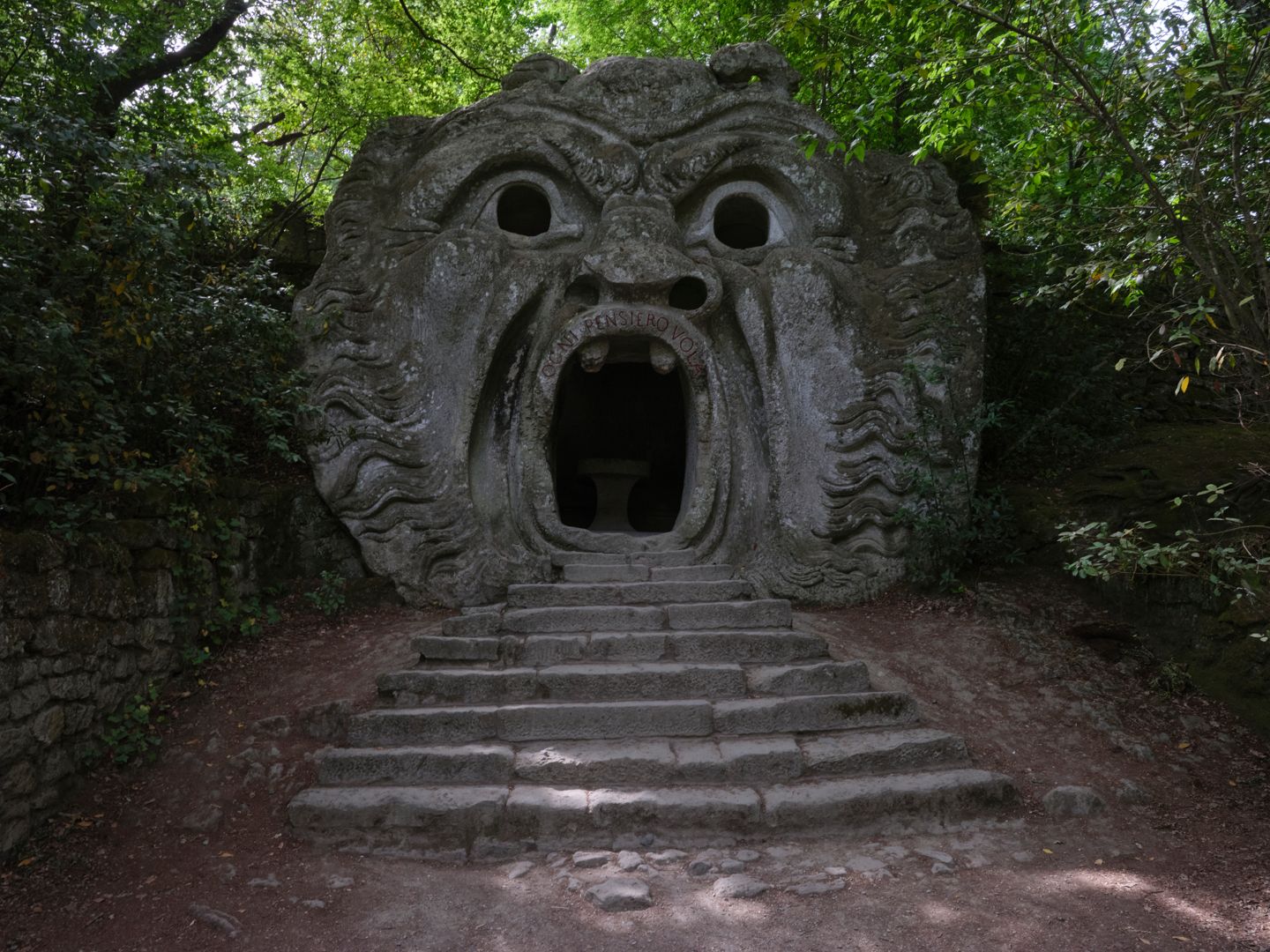
And what a strange place it was. This was the architectural period – just as Renaissance style was about to become Baroque – known as “Mannerist”, which produced some extraordinary effusions like the Cavalerizza in Mantua. So the garden of Bomarzo has nothing like the formality and symmetry of gardens like those of the Palazzo Farnese at Caprarola (the subject of a forthcoming post).
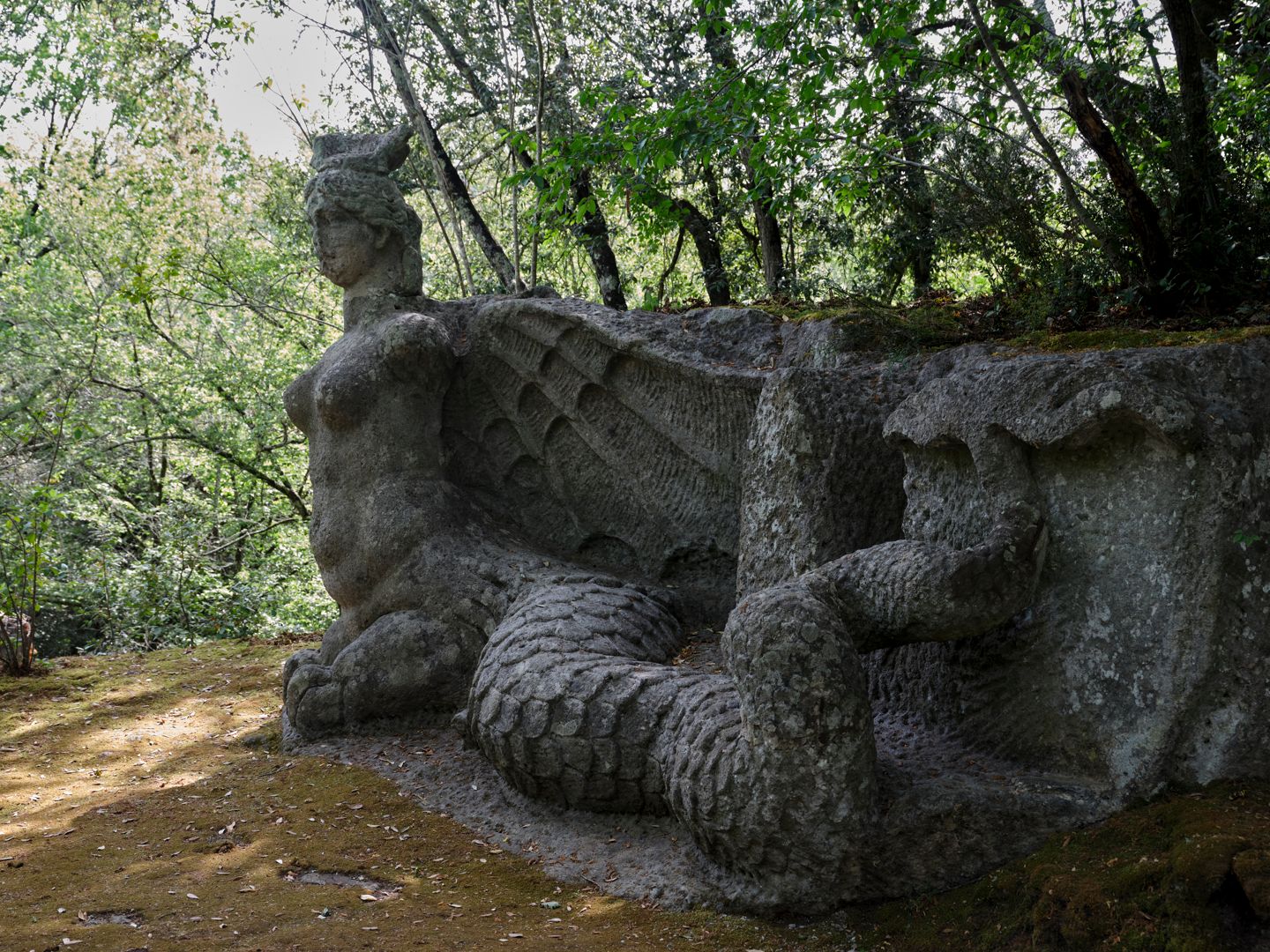
Instead the garden is dotted with seemingly randomly-placed statues and structures – gods, mythical creatures, monsters, a Carthaginian elephant trampling a Roman soldier, and a house that seems to be falling over (but which you can enter). There are also a few bears, which feature a lot in Orsini imagery, as it is a pun on their name (orso means bear).
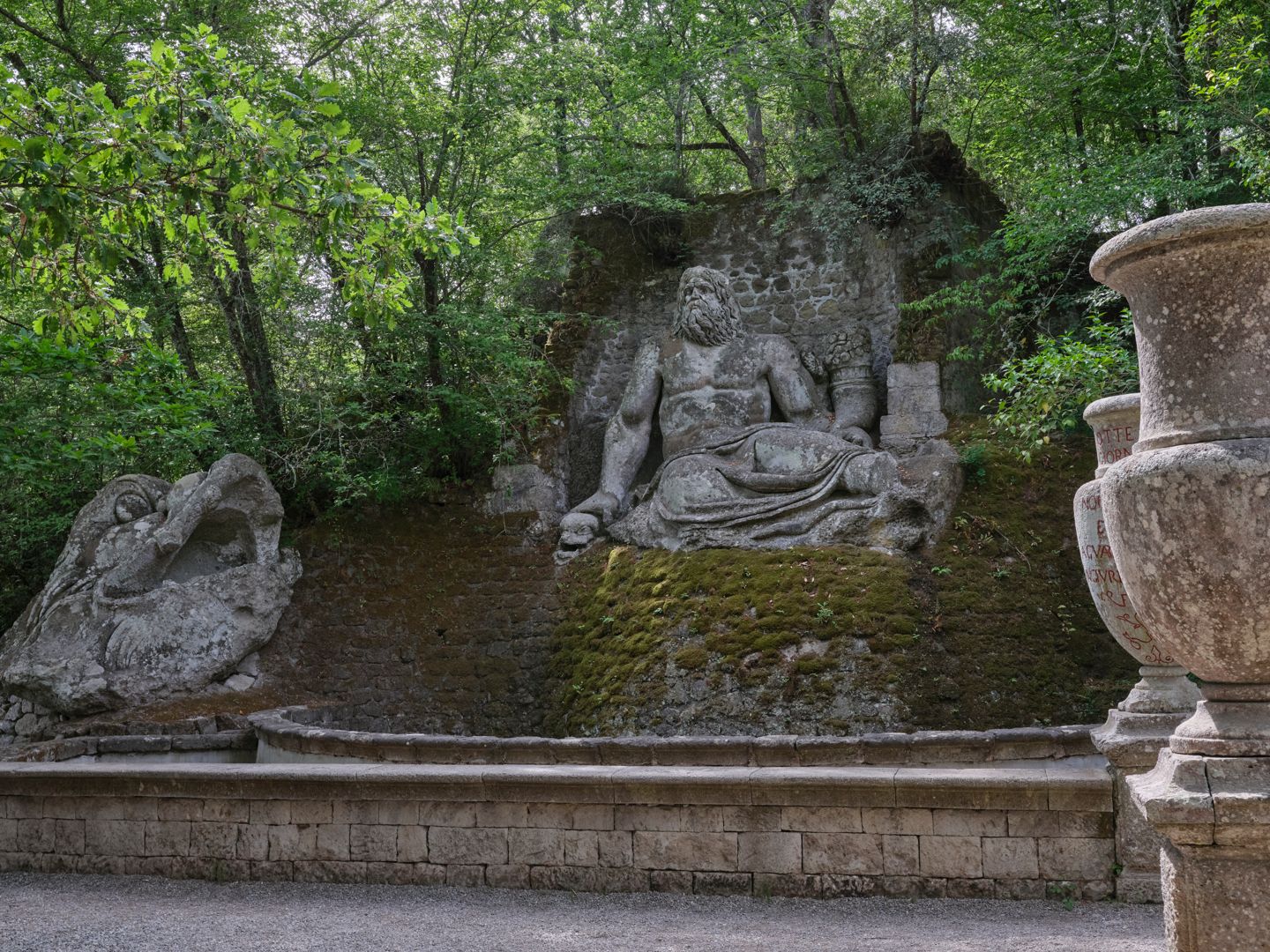
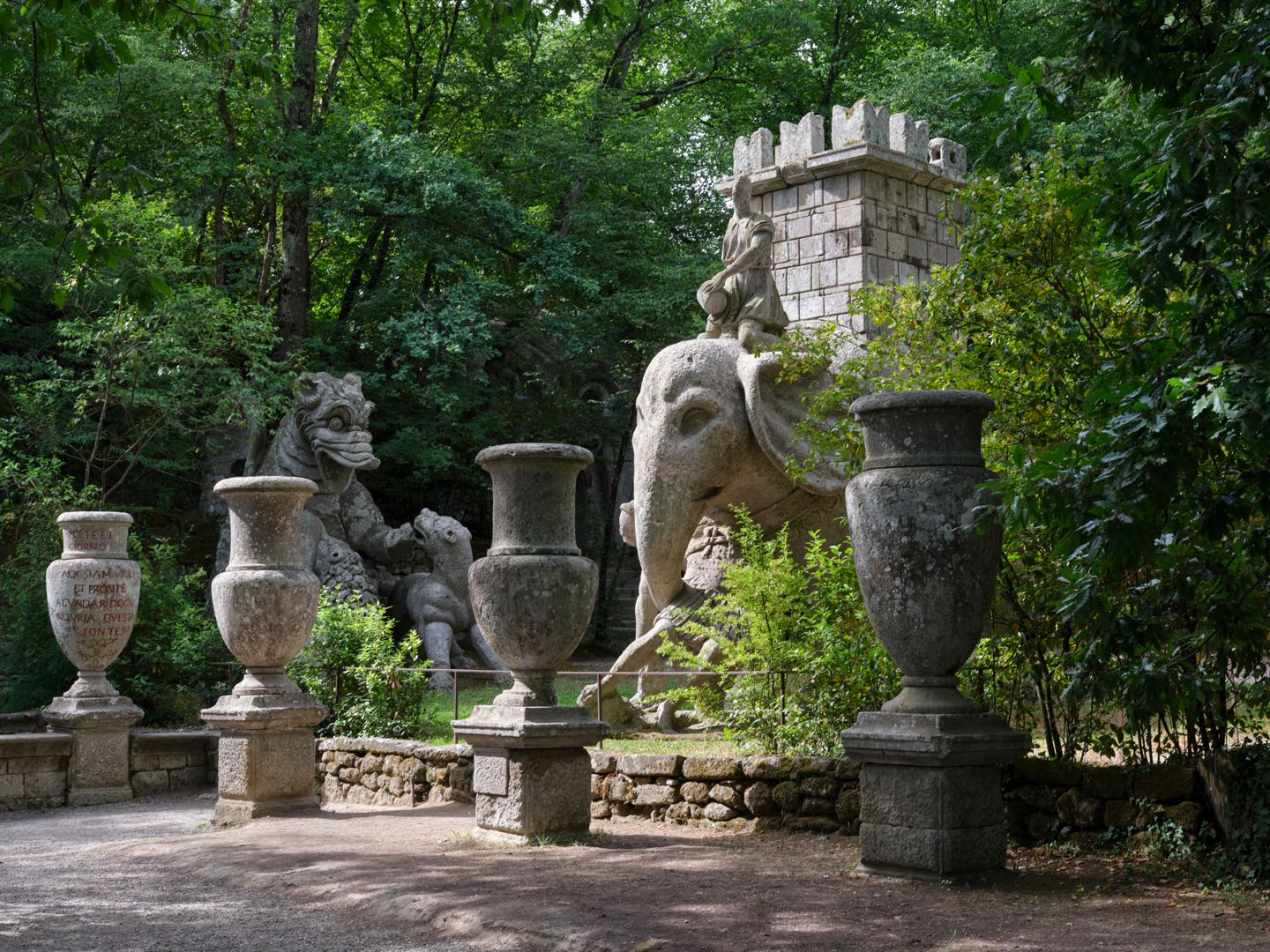
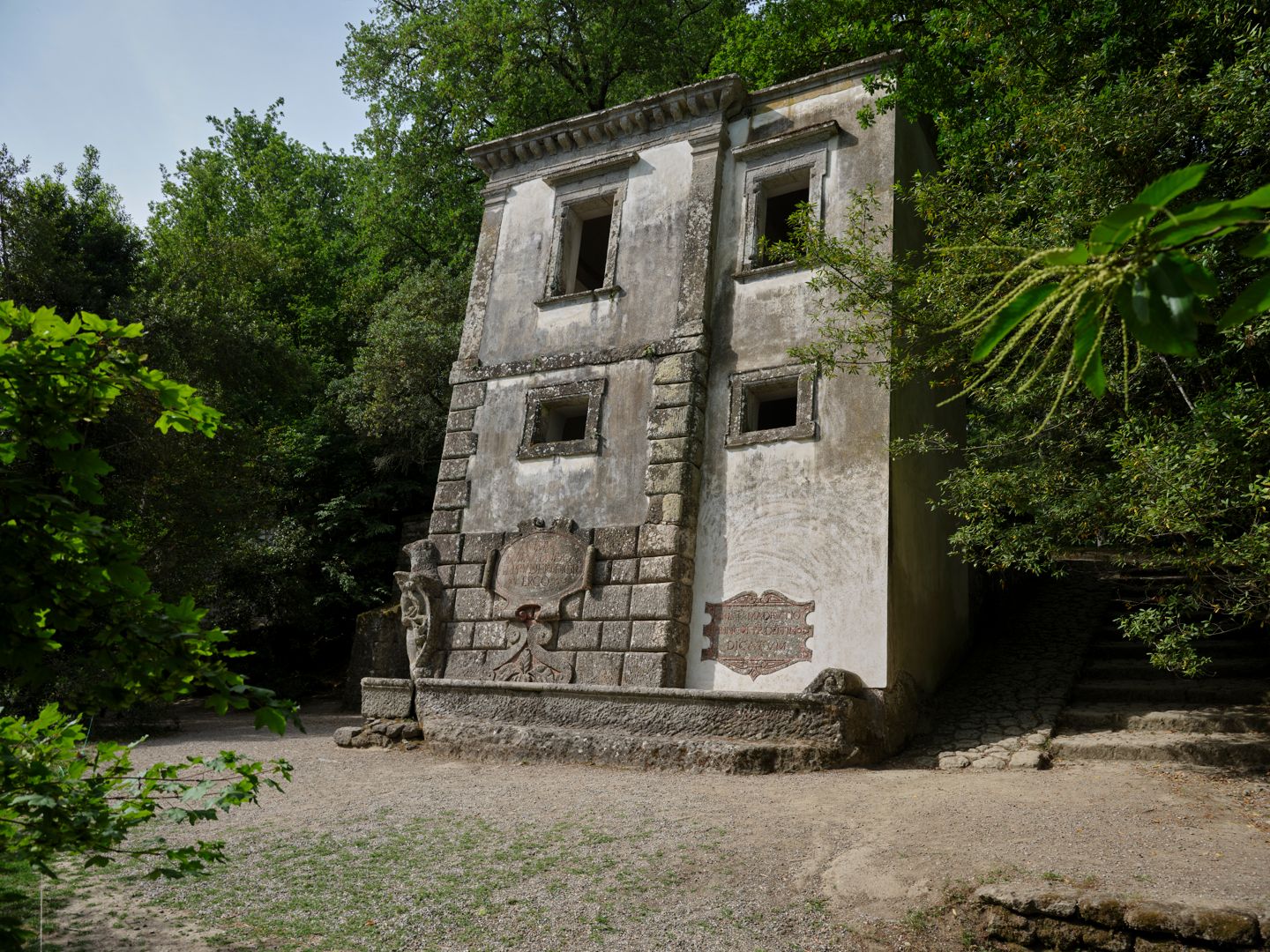
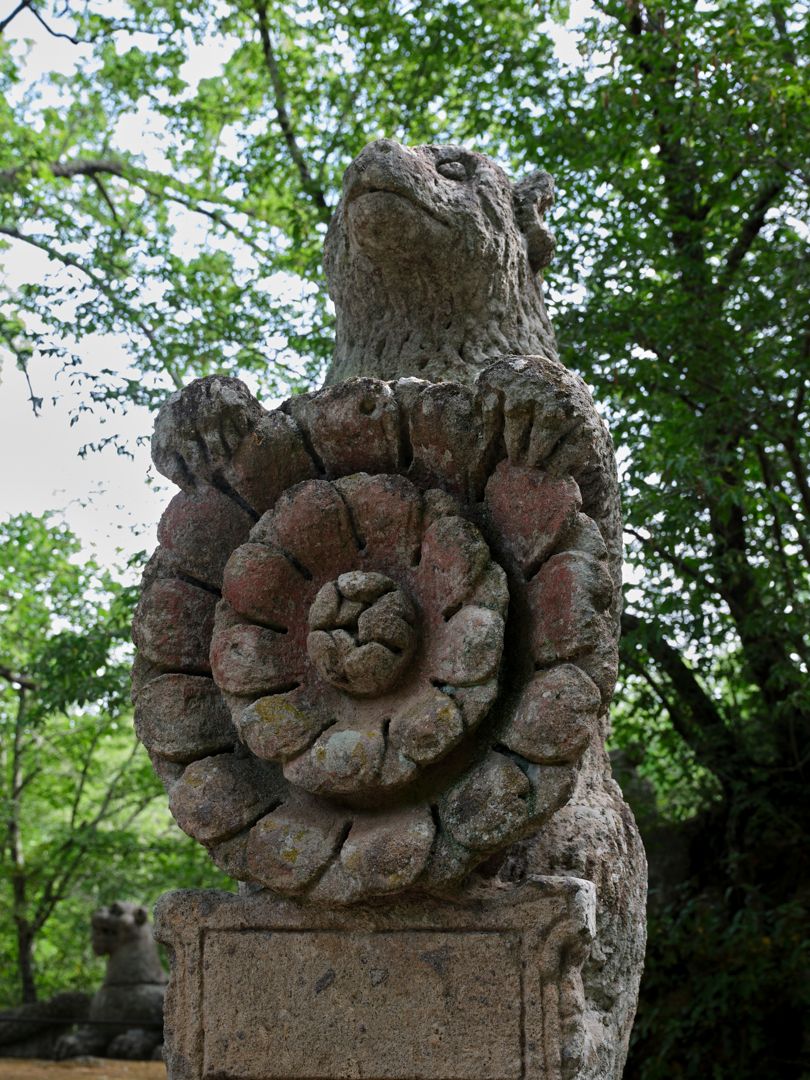
A sleeping (or dead?) woman is attended by an alert little dog.
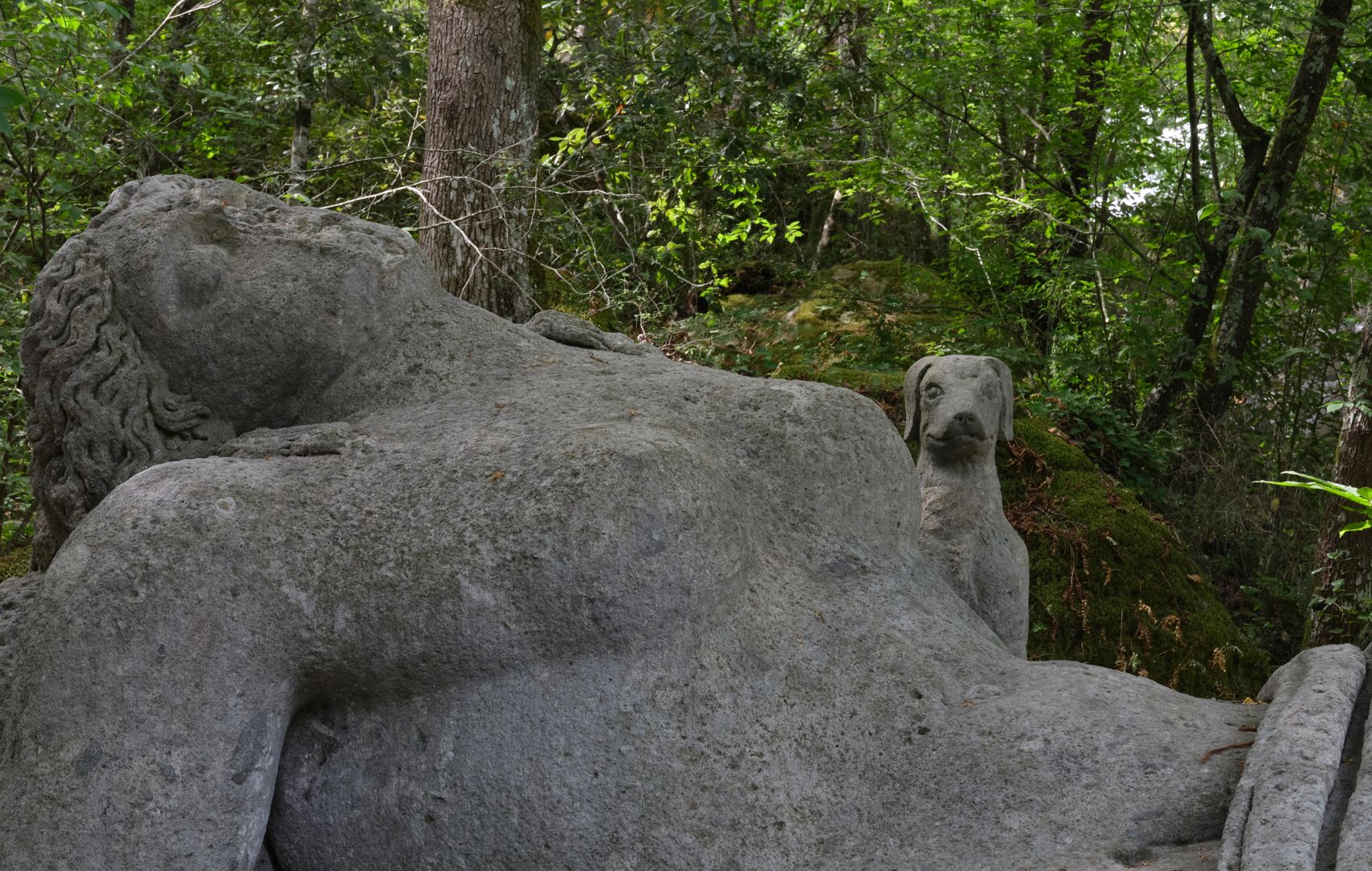
In isolation and together the statues are all interesting, even amusing, to look at. But as with a poem by T.S. Eliot, the educated “reader” of the garden would be expected to recognise the deeper allusions.
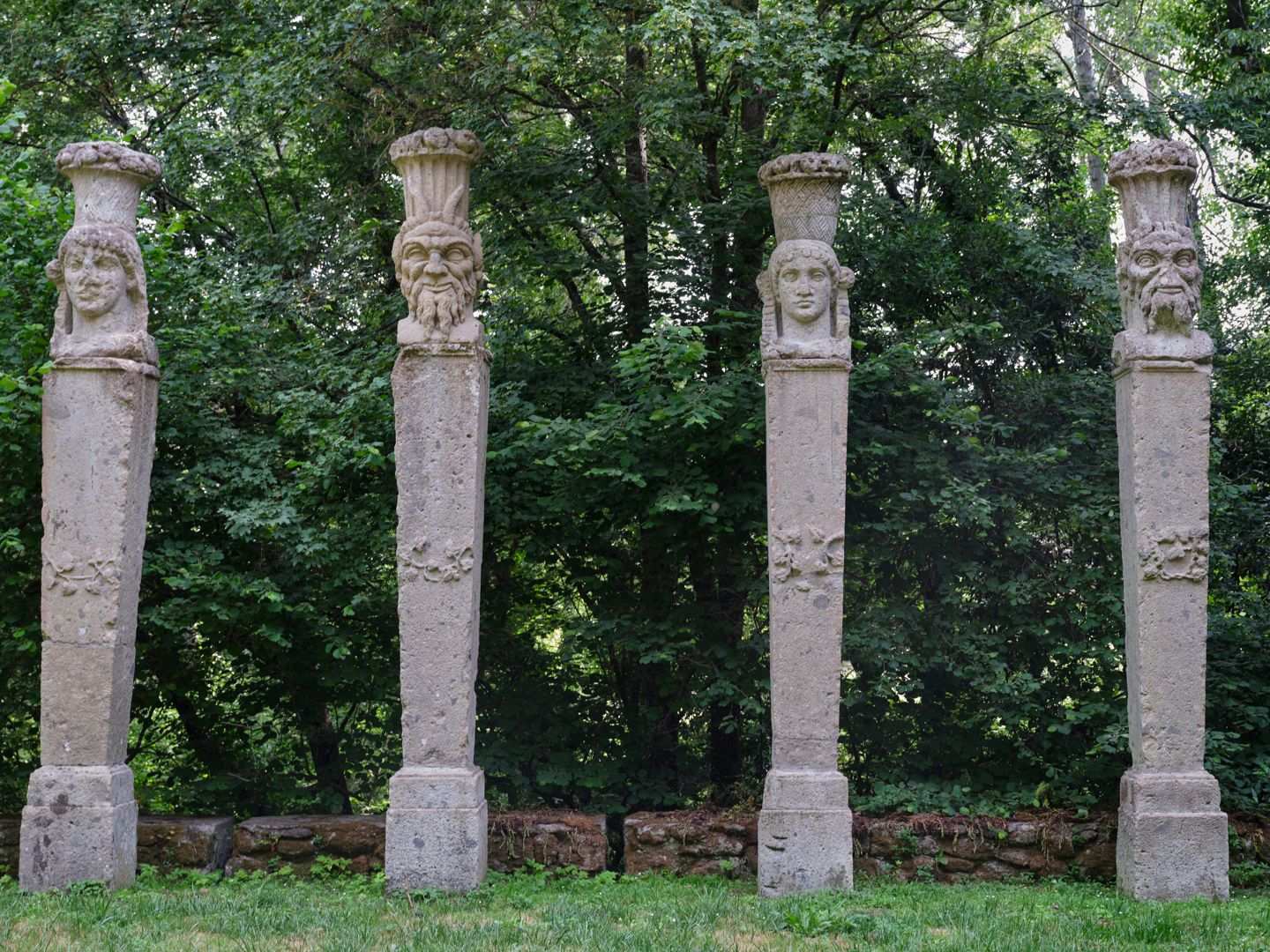
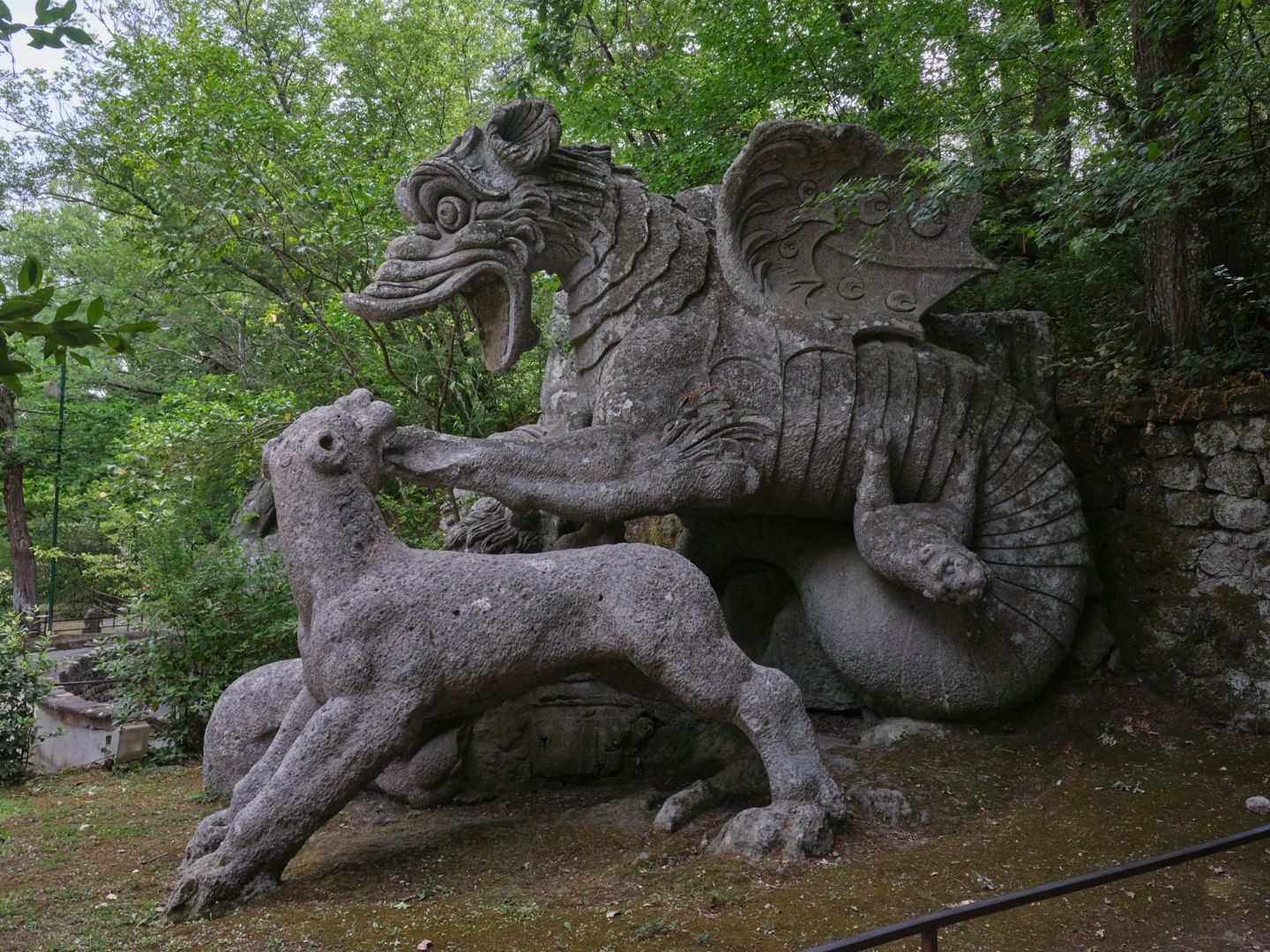

Similarly, dotted around the place are cryptic phrases like “ogni pensiero vola” (every thought flies) which appear to have some obvious meaning, but are also quotations from poets of the day, alluding to the subjects of those poems. In recent times the custodians of the garden have picked out some of the inscriptions in red paint – I don’t know what evidence there might be that this was the original intent. Indeed you might imagine that Vicino and Ligorio might have rather enjoyed the idea that the already-cryptic inscriptions might fade away altogether.
All that being said, there does not seem to be scholarly agreement on whether there is a “key” to the garden that unlocks its story. One theory is that the statues are intended to illustrate the story of a book called Hypnertomachia Poliphili, published in 1499 – one would think that would be fairly obvious if true.
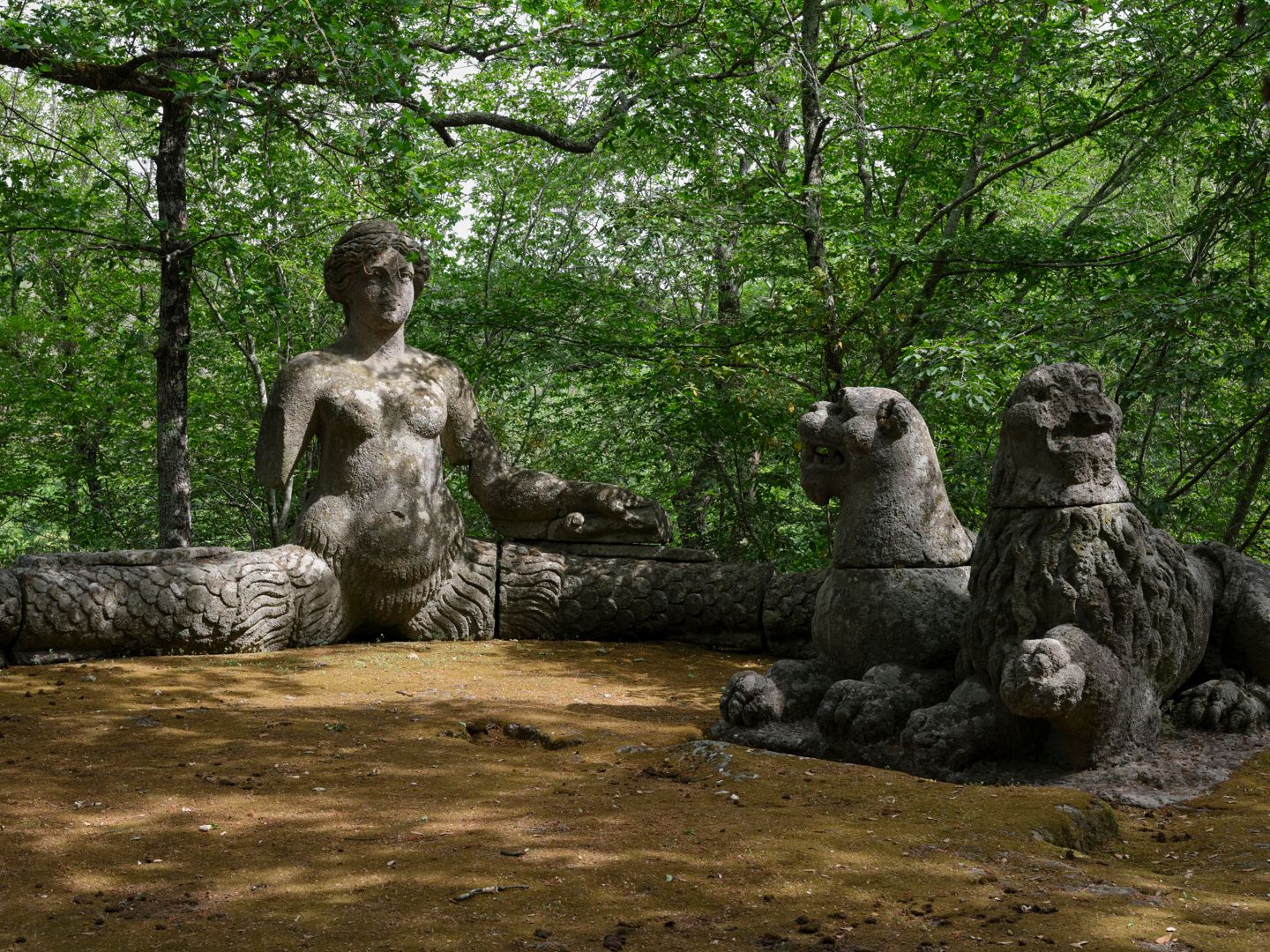
At the top of the garden is a little idealised classical temple, dedicated to Giulia Farnese.
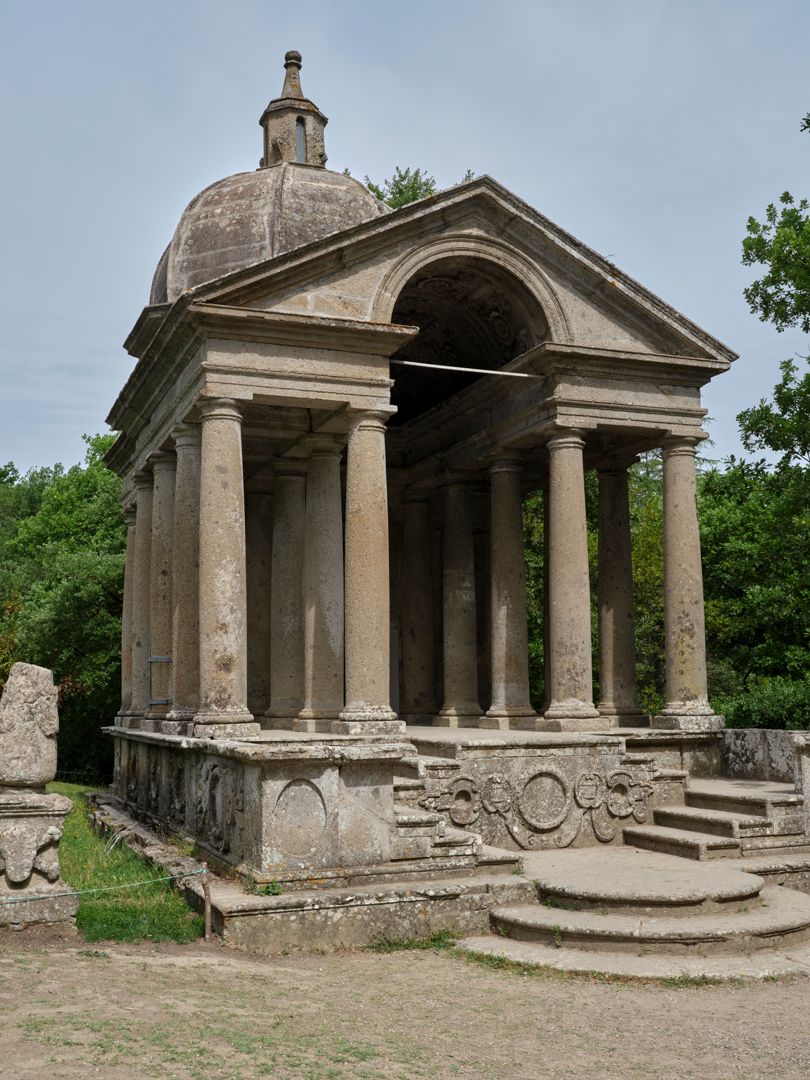
In the 19th Century, and for much of the 20th, the garden was forgotten and became overgrown. It came back into public awareness in the 1970s – championed by no less a connoisseur of the bizarre than Salvador Dalí – and a program of clearing and replanting began. It was deemed best for the local bishop to exorcise the place before being reopened to the public in 1980. But in its years of being forgotten, one wonders whether the grandmothers of Bomarzo would frighten naughty children with stories of the monsters hidden away in the woods below the town.
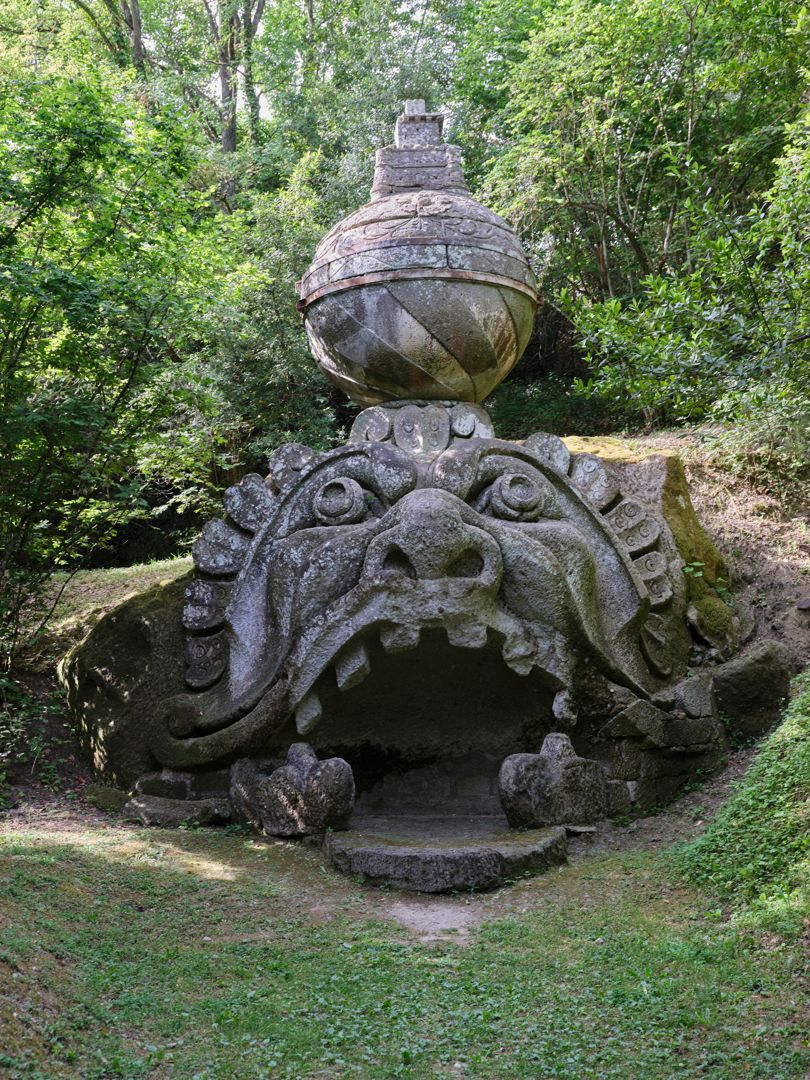
Sources
I originally wrote this article based on online material and the printed matter that you get when you buy your ticket for admission. But more recently a friend gave us a book called Monty Don’s Italian Gardens (Quadrille Publishing, 2011). In the article on Bomarzo Mr Don is scathing about the choice of trees used in the replanting.

One Reply to “The Sacred Wood of Bomarzo”